#john hathorne
Explore tagged Tumblr posts
Text
Chose 10 of the more iconic default names you get when playing Town of Salem.
#town of salem#tos#giles corey#deodat lawson#john willard#john hathorne#john proctor#betty parris#dorothy good#ann sears#sarah good#martha corey#town of salem default names#default names
27 notes
·
View notes
Note
My adversary, John Hathorne,
I confess that I feel uncrushed of late. The world seems... lighter, since your absence began. Each passing turn of moon and sun overhead seems... trivial, without that comforting presence atop me.
Whenceforth do you intend to return, I ponder? It surely is not this difficult to find more stones. If nature herself will not provide, then mayhap you could employ the ones God hath given.
Crushed only by loneliness,
Yours,
Giles Corey.
Yeah here we go
2 notes
·
View notes
Text
Hello Tumblr, it's certainly been a while since I've last posted on here! Anyways, I've been reading The Crucible in English, and my teacher absolutely despises Mary Warren-- I think that's a little unfair?
Like, let's face it-- Mary is a victim of the Witch Trials and Abigail's vengeance just as much as anyone else. Neither her personality nor her societal position really allows her space to do anything other than be deferential, so what else is there really for her to do other than obey when Abigail threatens her into submission? Mary is also arguably one of the only people in this play with some semblance of a moral compass (i.e. at the beginning she's the one who insists that they tell someone about the true nature of their sporting in the woods). Let's also not forget that Proctor threatens Mary and beats her into submission just to get her to admit to Hathorne and Danforth that the entire crying-out has been nothing but pretence. It's important to note that Mary is threatened and cowed into compliance/subordination in almost EVERY SINGLE SCENE of this play.
What my English teacher especially 'hates' is "how pathetic Mary is" and while I do agree that she's weak-willed and "pathetic," I think it's just plain unfair to call a seventeen-year-old girl living in a rigidly patriarchal society "pathetic" because she doesn't dare to speak out against authority. This isn't the 21st century; this is Salem in 1609, girl. She could've found herself amongst the accused-- and the dead-- if she hadn't played her cards right. And while we are supposed to valorise John Proctor for "keeping his integrity to the end, even if it means sacrificing himself," it's also important to acknowledge that maybe, just maybe, a teenage girl didn't want to die. How anyone can see her as anything other than a victim is beyond me.
However, my teacher is a millennial who has a very interesting idea regarding modern feminism, so maybe that's where she's coming from. This modern branch of extreme and borderline "shaming" feminism has done more harm than good for our society IMO. Imagine calling a fictional 17 year old weak and pathetic because she doesn't feel like she's equipped to speak out against age-old restrictions and boundaries that, when breached, could result in her death. Yeah. Real cool.
33 notes
·
View notes
Text
𝕿𝖍𝖊 𝕾𝖆𝖑𝖊𝖒 𝖂𝖎𝖙𝖈𝖍 𝕿𝖗𝖎𝖆𝖑𝖘

𝔄𝔫 𝔒𝔳𝔢𝔯𝔳𝔦𝔢𝔴
Historical Background
The Salem Witch Trials happened between 1692 and 1693 in colonial Massachusetts, mainly in the towns of Salem Village, Salem Town, Ipswich, and Andover. This period was dominated by Puritan religious beliefs, which were very strict and influenced every aspect of life. The Puritans had come to America to escape religious persecution in England and wanted to create a society based on their strict interpretation of the Bible.
The Puritans’ strict religious beliefs and their fear of the devil and witchcraft were fundamental to the Salem Witch Trials. The Puritan community believed in the literal existence of witches and the devil, which fueled the hysteria and paranoia that led to the trials.
Social and Economic Tensions
In the late 1600s, Massachusetts was experiencing social and economic challenges. Conflicts with Native Americans, known as King Philip’s War (1675–1678), had left the colonies struggling financially and emotionally. Salem Village, in particular, was a community full of disputes over land, church attendance, and local leadership, which created a lot of tension among its residents.
Smallpox was a recurring epidemic in colonial America and had a significant impact on communities. Outbreaks caused widespread fear and mortality, contributing to a heightened sense of anxiety and the search for scapegoats, including those accused of witchcraft.
The Little Ice Age and resulting harsh winters and poor harvests caused food shortages and economic stress in Salem. This economic hardship exacerbated existing tensions and contributed to the atmosphere of fear and suspicion.
Economic inequalities in Salem Village, where wealthier families often accused poorer or socially marginalized individuals of witchcraft, played a significant role in the trials. The accusations often targeted those who were seen as economic or social burdens.
The Start of the Accusations
In January 1692, two young girls in Reverend Samuel Parris’s household, Betty Parris and Abigail Williams, started having strange fits, contortions, and outbursts. When doctors couldn’t explain their symptoms, people suspected witchcraft. The girls accused three women of bewitching them: Tituba, an enslaved woman, "owned" by Reverend Samuel Parris; Sarah Good, a homeless woman; and Sarah Osborne, an elderly woman who rarely attended church.
Tituba’s confession is particularly significant because it was detailed and vivid. She admitted to practicing witchcraft, likely under duress or fear of further punishment, and described encounters with the devil and various supernatural phenomena. Her confession included dramatic elements such as signing the devil’s book and seeing strange creatures, which added fuel to the hysteria and led to more accusations.
Tituba’s role in the Salem Witch Trials was central to the initial outbreak of accusations and the ensuing hysteria. Her story reflects broader themes of racial and social marginalization, the power dynamics of confession under duress, and the tragic consequences of fear and superstition. Understanding Tituba’s experience provides valuable insight into the complexities and injustices of the Salem Witch Trials and highlights the enduring relevance of these themes in contemporary discussions of race, power, and justice.
The Trials and Executions
The accusations quickly escalated. The local court, led by magistrates John Hathorne and Jonathan Corwin, began investigating. The trials were unfair by today’s standards, often accepting “spectral evidence”—claims that the spirit of the accused was seen doing witchcraft.
Fear spread, and more people were accused. By summer 1692, special courts were set up to handle the cases. The first person executed was Bridget Bishop in June 1692. Overall, 19 people were hanged, one man (Giles Corey) was crushed to death with stones, and several others died in prison.
Women and Misogyny
Most of the accused were women, especially those who didn’t fit into the Puritan mold. Women who were outspoken, financially independent, or different in any way were at higher risk. The trials reflected deep-seated misogyny and fear of women who were seen as too powerful or too different.
Many of the women accused of witchcraft during the Salem Witch Trials, and in other witch hunts across Europe and colonial America, were often involved in practices that could be seen as healing or folk medicine, and midwives. They often used traditional remedies and herbs to treat illnesses and assist with childbirth. Their knowledge of healing and midwifery, while valuable, also set them apart. In a time when medical knowledge was limited and often intertwined with superstition, successful healing could be viewed with suspicion. If a treatment failed or a patient died, these women could be blamed for malevolent intent. Some of the accused women prepared and administered folk remedies using herbs, roots, and other natural substances. This knowledge was often passed down through generations and was a vital part of rural and village life. Herbalists’ knowledge of plants and their effects could be seen as arcane or magical. The ability to heal with plants, especially if the methods were not understood by others, made these women targets for suspicion and accusations of witchcraft.
Many women served as caregivers and counselors within their communities, offering support and advice during times of illness, personal trouble, or emotional distress. The intimate and influential role they played in the lives of their neighbors could be misinterpreted. If someone they helped later experienced misfortune, these women could be blamed for causing it through supernatural means.
The End of the Trials
By the end of 1692, people started to question the fairness of the trials and the use of spectral evidence. Influential figures like Increase Mather criticized the trials. Governor William Phips eventually dissolved the court in October 1692 and set up a new one that didn’t allow spectral evidence. The new court quickly acquitted many accused. In 1693, Phips pardoned everyone still in jail on witchcraft charges.
Aftermath and Legacy
In the years after the trials, Massachusetts tried to make amends. Some of those involved expressed regret. In 1697, a day of fasting and reflection was declared. In 1702, the trials were officially declared unlawful. By 1711, the colony passed a law restoring the rights and reputations of the accused and offered financial compensation to their families.
The Salem Witch Trials remain a powerful reminder of the dangers of mass hysteria, religious extremism, and unjust legal practices. For modern witches and those practicing alternative spiritualities, they highlight the importance of tolerance, understanding, and protecting individual freedoms.
Reflections for Modern Practitioners
For today’s witches, the Salem Witch Trials are a poignant reminder of past persecutions. They emphasize the need for solidarity, education, and advocacy against misunderstanding and prejudice. Remembering the victims of the Salem Witch Trials serves not only as a tribute to those who suffered but also as a warning to prevent such injustices in the future.
Understanding this dark chapter in history helps appreciate the progress made in religious freedom and the ongoing fight for acceptance and equality for all spiritual paths.
#spirituality#divination#witchblr#tarot#witch#witchcraft#free tarot readings#witch community#astrology#manifestation#salem#salem witch trials#salem witches#salem witch museum#witch blog#cottage witch#pagan witch#baby witch#witchy vibes#witchcore#witchy#witches#witch aesthetic#beginner witch#eclectic witch#folk witchcraft#green witch#eclectic wicca#witches of tumblr#witch history
11 notes
·
View notes
Text
This book is the second prequel to Practical Magic (preceded by Magic Lessons), but it was actually the second book published. I've decided to read them in the order they were published. I read Practical Magic over 20 years ago, after seeing the movie. At the time, I loved the movie more. However, upon reading this wonderful book, I plan to revisit Practical Magic to see if my older self will feel differently. I have a feeling I will. Of course, I will always love the movie, and I'm so excited they're making a new film. Sequel? Prequel? We shall see.
As I said, this was a wonderful story. I loved getting to know the aunts when they were young, and their brother. It was cool to learn the origins of the famous Sally and Gillian Owens. Most of all, I just love stories of magic and witchcraft. It's so much more than people think it is. I know some will understand this.
I'm not going to say much else. No spoilers from me! However, I will share a couple of favorite quotes from the book...
"Three hundred years ago people believed in the devil. They believed if an incident could not be explained, then the cause was something wicked, and that cause was often a woman who was said to be a witch. Women who did as they pleased, women with property, women who had enemies, women who took lovers, women who knew about the mysteries of childbirth, all were suspect, especially to the fiercest and cruelest judge in the area, John Hathorne, a man so terrible that his great-great grandson, the author of The Scarlet Letter, tried to deny his own heritage by changing the spelling of his name."
"This just means I know you better than you know yourself," Jet said. "But what else is a sister for?"
Anyone who has a sister who is dear to them will totally get that quote.

4 notes
·
View notes
Text
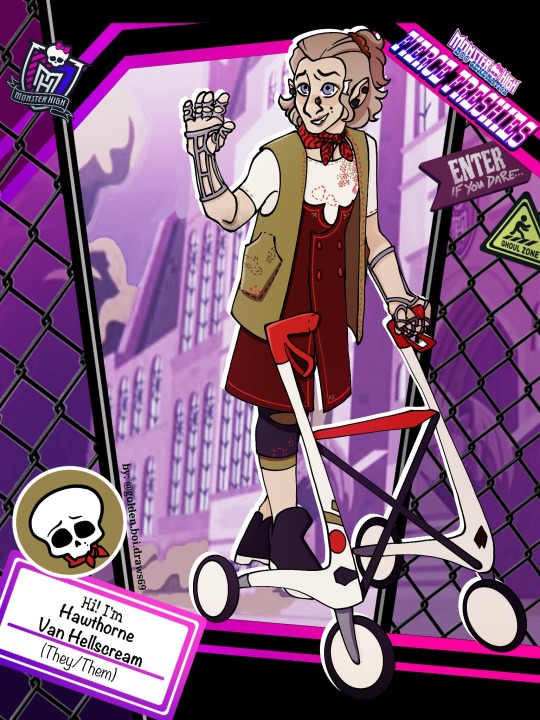

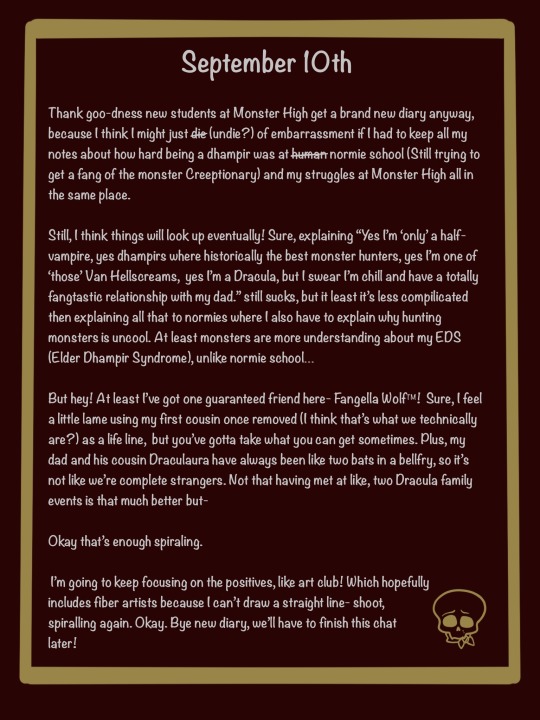
Alright! Another entry for a Monster High OC competition, this time @golden.boi.draws69 Boo Generation Fierce Freshies!
Since one of the main traits of dhampirs in folklore is their having a soft body or even no bones at all, I’ve been marinating the idea of a dhampir with the monster equivalent of EDS for a while.
I hadn’t planned on them being a fan kid, but when I was looking through the existing MH vampires I remembered that Draculaura’s cousin Thad from Ghouls Rule exists and really liked how a Dracula being their dad added to their whole drama. Then it was a matter of choosing a human from that movie and of course I had to go with the most dramatic option.
Anyway time for some design tidbits:
In Bulgarian folklore glog (hawthorn) is used to refer to vampire children and their descendants, whereas Nathaniel Hawthorne changed his last name from “Hathorne” to separate himself from his great-great-grandfather judge John Hathorne, who was one of the judges who oversaw the Salem Witch Trials.
The silver jewelry on their arms is based on real jewelry splints.
It’s faint, but Hawthorne got a bit of the sparkly vampire genes from their dad.
Their fashion and especially their love of embroidery was inspired by the traditional fashion of the Balkans, where real life Dhampir myths come from.
Their piercings are supposed to look like ticks, ‘cause bloodsucker.
17 notes
·
View notes
Text
Gilmore Girls M-W Masterlist
Name: Magnus Medina
Faceclaim: Dylan O’Brien
Love Interest: Jess Mariano
Story: N/A

Name: Mario Medina
Faceclaim: John Barrowman
Story: N/A

Name: Mercy Medina
Faceclaim: Michelle Trachtenberg
Love Interest: Logan Huntzberger
Story: N/A

Name: Monroe Gilmore
Faceclaim: Bebe Wood
Love Interest: N/A
Story: I See Stars

Name: Noah Grant
Faceclaim: Kit Conner
Love Interests: Rory Gilmore & Tristan Dugray
Story: N/A

Name: Oliver Lynn
Faceclaim: Jacob Elordi
Story: N/A
Love Interest: N/A

Name: Richie Gilmore
Faceclaim: Grant Gustin
Love Interest: Vance Hawthorn
Story: Things You Can’t Speak About

Name: Richie Gilmore/Richie Donahue-Callisto
Faceclaim: Grant Gustin
Love Interest Troy Donahue-Callisto & Harry Bechtel
A second variation of Richie who exists in the Delicate verse with @randomestfandoms-ocs' Kirsty, Troy, Harry, Vicki, and Lottie, sometimes combined with other crossovers.

Name: Regina Gilmore
Faceclaim: Leighton Meester
Love Interest: Vance Hawthorn, Grace Kim
Story: How Girls Should Behave

Name: Ruth Rygalski
Faceclaim: Idena Menzel
Love Interest: Max Medina
Story: Our Little Corner

Name: Rupert Hawthorn
Faceclaim: Tom Cavanagh
Love Interest: Alice Hathorn
Story: Multi

Name: Simon Forester
Faceclaim: Joe Keery
Love Interest: Jess Mariano/Kirsty Gilmore*
Story: Things You Can’t Speak About/Delicate*
*In the Delicate-verse with @randomestfandoms-ocs, Simon is usually Kirsty Gilmore’s love interest, with the exception of Everything Changes.

Name: Vance Hawthorn
Faceclaim: Ed Westwick
Love Interest: Regina Gilmore (How Girls Should Behave), Colin McCrae & Finn (multi-verse endgame), Richie Gilmore (endgame ship in Things You Can’t Speak About)
Story: Multi

Name: Vienna Geller
Faceclaim: Kiernan Shipka
Love Interest: Tristan Dugray, endgame TBD
Story: Mastermind

Name: Wayne Colt-Forester
Faceclaim: Jensen Ackles
Love Interest: Dennis Colt-Forester
Story: Things You Can’t Speak About

3 notes
·
View notes
Text
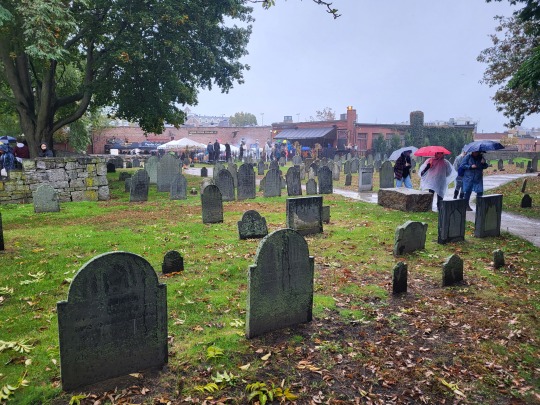





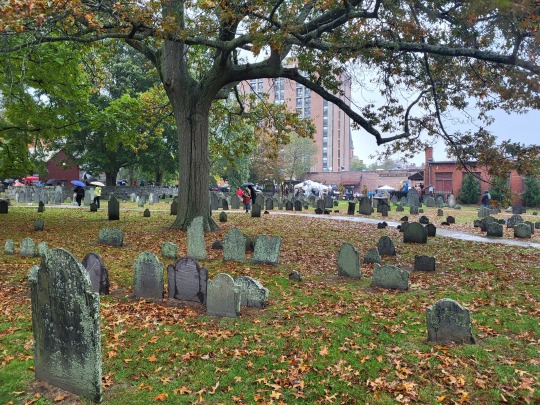
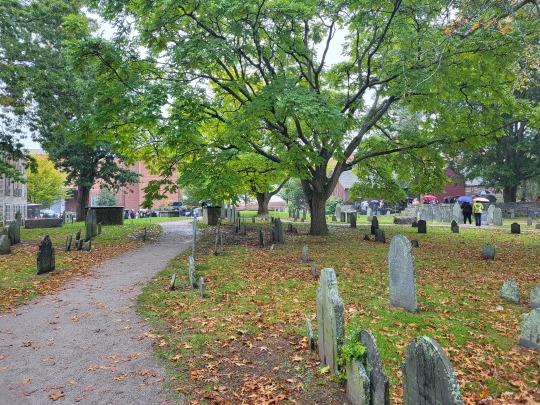
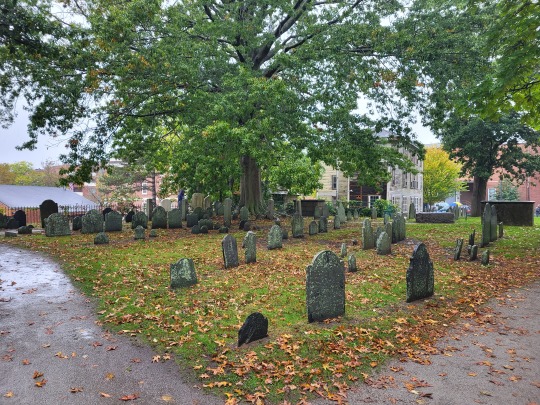



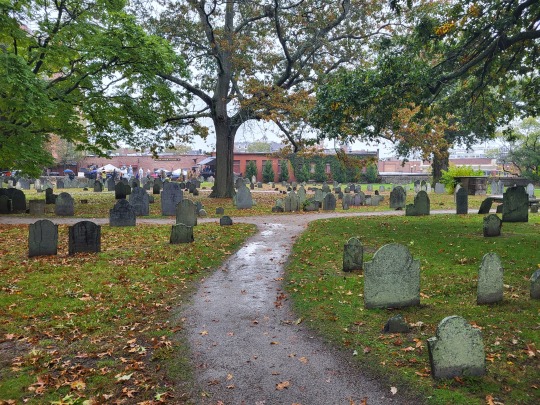
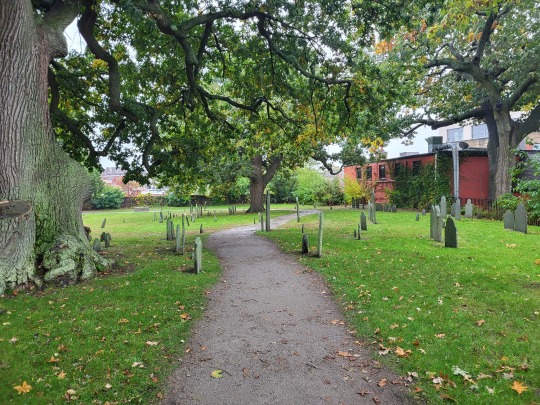

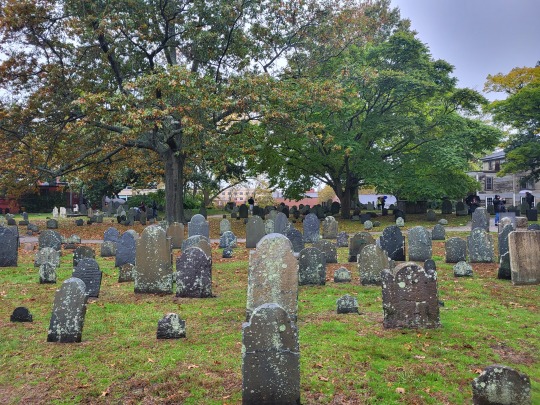


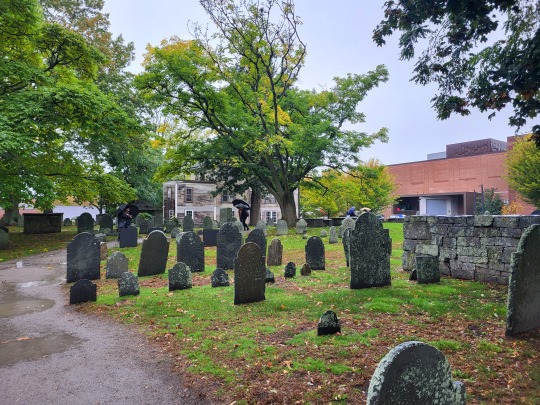
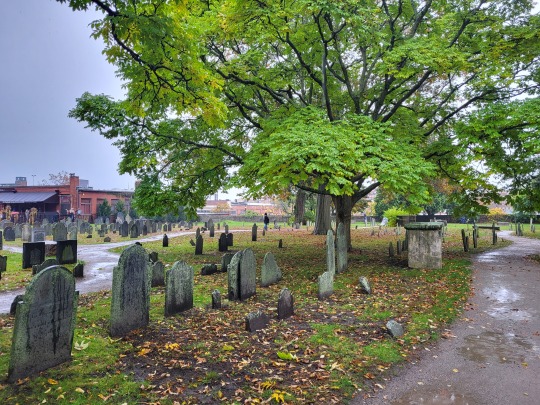
Charter Street Cemetery October 21, 2023 Salem, Massachusetts
This is the cemetery where some the bodies of the victims of the witch trials were dumped and never given a proper burial because it was considered unclean or bad luck to touch the body of a witch. The grave of John Hathorne, the most hated judge during the trials, is also here. This is one of the oldest cemeteries in the US, which opened in 1637.
#massachusetts#salem massachusetts#salem witch trials#witch trials#charter street cemetery#old cemetery#headstone#graveyard#grave marker#historic cemetery#our adventures
6 notes
·
View notes
Note
“DECENT PERSON?” “IN PURSUIT OF RIGHTEOUSNESS?” COOL IT WITH THE SANCTIMONY, JOHN HATHORNE, THE LAST THING I NEED IS A PROSTYLATIZING HYPOCRITE.
FLASH HISTORY LESSON: THE NEW ENGLAND WITCH TRIALS WERE A REAL ‘MARTINS AND THE COYS’ STYLE BLOOD FEUD. ONCE THOSE SNIVELING ADOLESCENTS FIRST CRIED WITCH,” EVERYONE’S WANTED A CUT. THE PUTNAMS COULD ICE OUT THE PORTERS, SNAG THEIR LAND IN A FUN LEGAL LOOPHOLE, AND CARRY ON AS THE DRIVING POLITICAL FORCE OF SALEM VILLAGE. GREAT TO SEE
YOU’RE KEEPING THE OLD TRADITIONS ALIVE! BRING BACK MERCURY AS COLD MEDICINE NEXT!
-BGB
(( fuyddhshjdk
3 notes
·
View notes
Photo





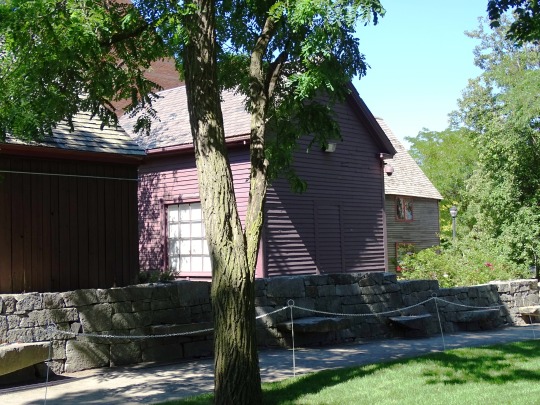
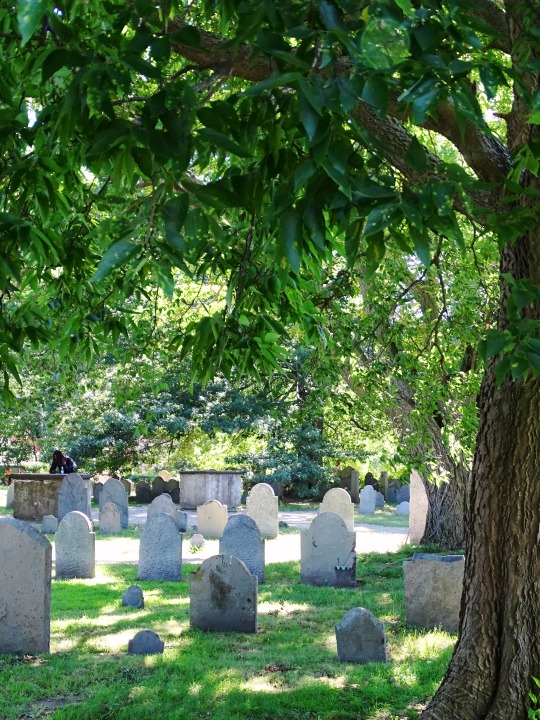

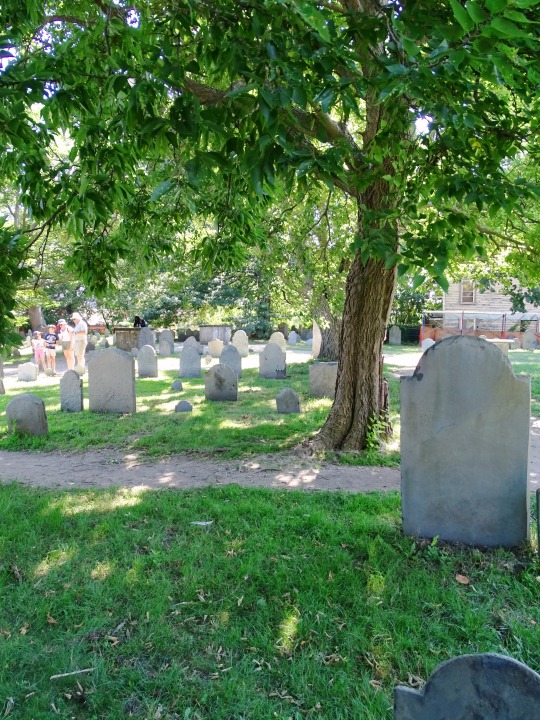

Based on formal complaints from Joseph Hutchinson, Thomas Putnam, Edward Putnam and Thomas Preston, Magistrates John Hathorne and Jonathan Corwin issue warranted to arrest Sarah Good, Sarah Osborne and Tituba for afflicting Elizabeth Parris, Abigail Williams, Ann Putnam Jr. and Elizabeth Hubbard on February 29, 1692.
Sarah Good, Sarah Osborne and Tituba were brought before local magistrates in Salem Village, March 1, 1692, beginning what would become known as the Salem witch trials.
#arrested#29 February 1692#1 March 1692#court#anniversary#US history#Salem#Massachusetts#New England#architecture#cityscape#travel#USA#The Salem Witch Trials Memorial by Maggie Smith and James Cutler#Old Burying Point Cemetery#original photography#vacation#summer 2018#landmark#tourist attraction#Charter Street Burying Point#tree#lawn#nature#public art
2 notes
·
View notes
Text
A Brief History of the Salem Witch Trials

T.H. Matteson, Examination of a Witch, 1853
The Salem witch trials occurred in colonial Massachusetts between early 1692 and mid-1693.
More than 200 people were accused of practicing witchcraft—the devil’s magic—and 20 were executed.
In 1711, colonial authorities pardoned some of the accused and compensated their families.
But it was only in July 2022 that Elizabeth Johnson Jr., the last convicted Salem “witch” whose name had yet to be cleared, was officially exonerated.
Since the 17th century, the story of the trials has become synonymous with paranoia and injustice.
Fueled by xenophobia, religious extremism and long-brewing social tensions, the witch hunt continues to beguile the popular imagination more than 300 years later.

Map of Salem Village in 1692
In the medieval and early modern eras, many religions, including Christianity, taught that the devil could give people known as witches the power to harm others in return for their loyalty.
A “witchcraft craze” rippled through Europe from the 1300s to the end of the 1600s.
Tens of thousands of supposed witches—mostly women—were executed.
Though the Salem trials took place just as the European craze was winding down, local circumstances explain their onset.

In 1689, English monarchs William and Mary started a war with France in the American colonies.
Known as King William’s War to colonists, the conflict ravaged regions of upstate New York, Nova Scotia and Quebec, sending refugees into the county of Essex—and, specifically, Salem Village—in the Massachusetts Bay Colony.
(Salem Village is present-day Danvers, Massachusetts; colonial Salem Town became what’s now Salem.)

The displaced people placed a strain on Salem’s resources, aggravating the existing rivalry between families with ties to the wealth of the port of Salem and those who still depended on agriculture.

Controversy also brewed over the Reverend Samuel Parris, who became Salem Village’s first ordained minister in 1689 and quickly gained a reputation for his rigid ways and greedy nature.
The Puritan villagers believed all the quarreling was the work of the devil.
In January 1692, Parris’ daughter Elizabeth (or Betty), age 9, and niece Abigail Williams, age 11, started having “fits.”
They screamed, threw things, uttered peculiar sounds and contorted themselves into strange positions.
A local doctor blamed the supernatural.
Another girl, 12-year-old Ann Putnam Jr., experienced similar episodes.
On February 29, under pressure from magistrates Jonathan Corwin and John Hathorne, colonial officials who tried local cases, the girls blamed three women for afflicting them:

Tituba, a Caribbean woman enslaved by the Parris family; Sarah Good, a homeless beggar; and Sarah Osborne, an elderly impoverished woman.
The witch hunt begins
All three women were brought before the local magistrates and interrogated for several days, starting on March 1, 1692.
Osborne claimed innocence, as did Good.
But Tituba confessed, “The devil came to me and bid me serve him.”
She described elaborate images of black dogs, red cats, yellow birds and a “tall man with white hair” who wanted her to sign his book.
She admitted that she’d signed the book and claimed there were several other witches looking to destroy the Puritans.
With the seeds of paranoia planted, a stream of accusations followed over the next few months.
Charges against Martha Corey, a loyal member of the church in Salem Village, greatly concerned the community; if she could be a witch, then anyone could.
Magistrates even questioned Good’s 4-year-old daughter, Dorothy, whose timid answers were construed as a confession.
The questioning got more serious in April, when the colony’s deputy governor, Thomas Danforth, and his assistants attended the hearings.
Dozens of people from Salem and other Massachusetts villages were brought in for questioning.

On May 27, 1692, Governor William Phips ordered the establishment of a Special Court of Oyer (to hear) and Terminer (to decide) for Suffolk, Essex and Middlesex counties.
The first accused witch brought in front of the special court was Bridget Bishop, an older woman known for her gossipy habits and promiscuity.
When asked if she committed witchcraft, Bishop responded, “I am as innocent as the child unborn.”

The defense must not have been convincing, because she was found guilty and, on June 10, became the first person hanged on what was later called Gallows Hill.

Just a few days after the court was established, respected minister Cotton Mather wrote a letter imploring the court not to allow spectral evidence—testimony about dreams and visions.
The court largely ignored this request, sentencing the hangings of five people in July, five more in August and eight in September.

On October 3, following in his son Cotton’s footsteps, Increase Mather, then-president of Harvard, denounced the use of spectral evidence:
“It were better that ten suspected witches should escape than one innocent person be condemned.”
Phips, in response to these pleas and his own wife’s questioning as a suspected witch, prohibited further arrests and released many accused witches.

He dissolved the Court of Oyer and Terminer on October 29, replacing it with a Superior Court of Judicature, which disallowed spectral evidence and condemned just 3 out of 56 defendants.

By May 1693, Phips had pardoned all those imprisoned on witchcraft charges.
But the damage was already done.
Nineteen men and women had been hanged on Gallows Hill.

Giles Corey, Martha’s 71-year-old husband, was pressed to death in September 1692 with heavy stones after refusing to submit himself to a trial.
At least five of the accused died in jail.
Even animals fell victim to the mass hysteria, with colonists in Andover and Salem Village killing two dogs believed to be linked to the devil.
Engraving of witchcraft trials in Salem, Massachusetts
More than 200 people were accused of witchcraft during the Salem witch trials.
Restoring good names
In the years following the trials and executions, some involved, like judge Samuel Sewall and accuser Ann Putnam, publicly confessed error and guilt.
On January 14, 1697, Massachusetts’ General Court ordered a day of fasting and soul-searching over the tragedy of Salem.
In 1702, the court declared the trials unlawful.
And in 1711, the colony passed a bill restoring the rights and good names of many of the accused, as well as granting a total of £600 in restitution to their heirs.
But it wasn’t until 1957—more than 250 years later—that Massachusetts formally apologized for the events of 1692.
Johnson, the accused woman exonerated in July 2022, was left out of the 1957 resolution for reasons unknown but received an official pardon after a successful lobbying campaign by a class of eighth-grade civics students.
In the 20th century, artists and scientists alike continued to be fascinated by the Salem witch trials.
Playwright Arthur Miller resurrected the tale with his 1953 play The Crucible, using the trials as an allegory for the anti-communist McCarthyism then sweeping the country.
Scholars offered up competing explanations for the strange behavior that occurred in Salem, with scientists seeking a medical cause for the accusers’ afflictions and historians more often grounding their theories in the community’s tense sociopolitical environment.

Memorial to Rebecca Nurse, who was executed for witchcraft, at the Salem Witch Memorial in Salem, Massachusetts
An early hypothesis now viewed as “fringe, especially in historical circles,” according to Vox, posited that the accusers suffered from ergotism, a condition caused by eating foods contaminated with the fungus ergot.
Symptoms include muscle spasms, vomiting, delusions and hallucinations.
Other theories emphasize a “combination of church politics, family feuds and hysterical children, all of which unfolded in a vacuum of political authority,” as Encyclopedia Britannica notes.
Ultimately, the causes of the witch hunt remain subject to much debate.
In August 1992, to mark the 300th anniversary of the trials, Nobel Laureate Elie Wiesel dedicated the Witch Trials Memorial in Salem.

Also in Salem, the Peabody Essex Museum, which houses the original court documents, mounted an exhibition reckoning with and reclaiming the tragedy in late 2021 and early 2022.
Finally, the town’s most-visited attraction, the Salem Witch Museum, attests to the public’s enduring enthrallment with the 17th-century hysteria.
0 notes
Text



Tituba may have sailed from Barbados in 1680 with Parris, then still a bachelor and not yet a minister. Though likely a South American Indian, her origins are unclear.
Tituba came before the authorities in Salem Village on March 1, 1692, to answer to witchcraft charges. Multiple reports sat poised to take her words.
And someone - presumably hard-edged, 51-year-old John Hathorne, the Salem town justice who handled the bulk of the early depositions - made the decision to interrogate her last.

Tituba made it clear that she was the life of the corn-pounding, pea-shelling Parris kitchen. She submitted a vivid and lurid report. More than anyone else, she propelled America's infamous witch hunt forward, supplying its imagery and determining its shape.

The creature she claimed to have so much trouble describing (and which she described vividly) was, she explained, Hathorne's other suspect, in disguise.
She was a brilliant storyteller, the more compelling for her simple declarative statements. The accent may have helped. She was as utterly clear minded and cogent as one could be in describing translucent cats. And she was expansive: Hers is among the longest of all Salem testimonies. Having fielded no fewer than 39 queries that Tuesday, Tituba proved equally obliging over the next days. She admitted that she had pinched victims in several households. She delivered on every one of Hathorne's leading questions. If he mentioned a book, she could describe it. If he inquired after the devil's disguises, she could provide them.

While she was hauntingly specific, she was also gloriously vague. Indeed she had glimpsed the diabolical book. But she could not say if it was large or small. The devil might have had white hair; perhaps he had not. While there were many marks in the book, she could not decipher names other than those of the two women already under arrest. Other confessors would not be so careful. Did she see the book? "No, he no let me see, but he tell me I should see them the next time," she assured Hathorne.




which endures on paper.
Why the retrofitted racial identity? Arguably bias has played a role: A black woman at the center of the story made more sense, in the same way that - as Tituba saw it - a man in black belonged at the center of a diabolical conspiracy. Her history was written by men, working when African voodoo was more electrifying than outmoded English witchcraft. All wrote after the Civil War, when a slave was understood to be black. Miller believed Tituba had actively engaged in devil worship; he read her confession - and the 20th century sources - at face value. By replacing the Salem justices as the villain of the piece, Tituba exonerated others, the Massachusetts elite most of all.
In her testimony and her afterlife, preconceptions neatly shaped the tale: Tituba delivered on Hathorne's leads as she knew her Scripture well. Her details tallied unerringly with the reports of the bewitched. Moreover, her account never wavered. "And ir was thought that if she had feigned her confession, she could not have remembered her answers so exactly," an observer explained later. A liar, it was understood, needed a better memory.
But it seems the opposite is true: The liar sidesteps all inconsistencies. The truth teller rarely tells his story the same way twice.
If the spectral cats and diabolical compacts sound quaint, the trumped-up hysteria remains eminently modern.
1 note
·
View note
Note
Giles Corey here, chiming in on discord names
HOW COULD I FORGET, from John Hathorne, of course
2 notes
·
View notes
Video
youtube
The Charlie Daniels Band - The Devil Went Down to Georgia (Audio)
Webster says: "Mr. Stone is an American citizen, and no American citizen may be forced into the service of a foreign prince. We fought England for that in '12 and we'll fight all hell for it again!" To this Mr. Scratch insists on his own citizenship, citing his presence at the worst events in the history of the U.S., concluding, "though I don't like to boast of it, my name is older in this country than yours".
Webster demands a trial as the right of every American. Mr. Scratch agrees after Webster says that he can select the judge and jury, "so long as it is an American judge and an American jury". A jury of the damned enters, "with the fires of hell still upon them". They had all done evil, and had all played a part in the formation of the United States:
Walter Butler, a Loyalist
Simon Girty, a Loyalist
King Philip, sachem of the Wampanoag people, who fought against the English
Governor of Virginia Thomas Dale, known for his high-handed administration
Thomas Morton, a rival of the Plymouth Pilgrims
Pirate Edward Teach, also known as Blackbeard
Reverend John Smeet (fictional character)[1]
After five other unnamed jurors enter (Benedict Arnold being out "on other business"), the judge enters last. It is John Hathorne, who presided at the Salem witch trials.
The trial is rigged against Webster. He is outraged but calms himself, thinking "for it was him they'd come for, not only Jabez Stone".
Webster starts to orate on simple and good things – "the freshness of a fine morning...the taste of food when you're hungry...the new day that's every day when you're a child" – and how "without freedom, they sickened". He speaks passionately of how wonderful it is to be human and to be an American. He admits the wrongs done in the course of American history but points out that something new and good had grown from them and that "everybody had played a part in it, even the traitors". Humankind "got tricked and trapped and bamboozled, but it was a great journey", something "no demon that was ever foaled" could ever understand.
The jury announces its verdict: "We find for the defendant, Jabez Stone." They admit, "Perhaps 'tis not strictly in accordance with the evidence,[2] but even the damned may salute the eloquence of Mr. Webster." The judge and jury disappear with the break of dawn. Mr. Scratch congratulates Webster, and the contract is torn up. The devil has overreached himself, agreeing to a jury trial out of pride in his unbreakable contract. But by doing so, he has put his contract within the reach of the Common Law used in America, under which a jury can enter whatever verdict it likes, regardless of the law. Webster's eloquence in swaying this supposedly unswayable jury is remarkable, but would have gone to no effect without the devil's pride-induced mistake in giving Webster a chance.
Webster then grabs the stranger/Satan and twists his arm behind his back, "for he knew that once you bested anybody like Mr. Scratch in fair fight, his power on you was gone." Webster makes him agree "never to bother Jabez Stone nor his heirs or assigns nor any other New Hampshire man till doomsday!"
Mr. Scratch offers to tell Webster's fortune in his palm. He foretells (actual) events in Webster's future, including his failure to become President (an actual ambition of his), the death of Webster's sons (which happened in the American Civil War) and the backlash of his last speech, warning "Some will call you Ichabod" (as in John Greenleaf Whittier's poem in reaction to Webster's controversial Seventh of March speech supporting the Compromise of 1850 that incorporated the Fugitive Slave Act, with many in the North calling Webster a traitor).
Webster asks only if the Union will prevail. Scratch admits that the United States will remain united after the war. Webster then laughs, "... and with that he drew back his foot for a kick that would have stunned a horse. It was only the tip of his shoe that caught the stranger, but he went flying out of the door with his collecting box under his arm ... And he hasn't been seen in the state of New Hampshire from that day to this.
-----------------------------------------------------------------------------------------------------
The story finishes like this. Daniel Webster arrested him in some books show that the original. And they did try him for treason and hanged him and put him in a tomb and they braced it and felt him full of formaldehyde usually the creatures are weak they say. Unless they are electrified with formaldehyde it would be the opposite and yeah it is entombed inside something that is enclosed from that. And I know where and he thinks that it is weird daniel Webster was which is Concord MA. And it's true and there are several legends there and I was not aware of this the max might be and this is what they're after to try and get ahead of our friend here This creature is going to activate the demons and it is really the one that he controls. And I may have had him arrested a couple times and it's stupid he knows I was afflicted and I have to fix it it's wrong. It's these people. However he said that trump will mutate and he will become the creature and the creature will leave as he will be separated from it and he will still mutate in his face in other parts and probably be possessed again the creature will go a separate way while he is somewhere you can't talk about and will perform the act and people can't verify and they will struggle to and then he will be returned to Westbrook and they'll verify his skeleton. And Tommy F will be blamed and sought and the brain of Trump will be sought and the creature will have activated the device in the Vatican the devil himself will go on and be in many movies he says and will disappear go back in time and be caught by myself, daniel Webster and Nathaniel Hawthorne is Ben Arnold and he's in trouble as well. It happens to be with a different devil but this is number one and Ben is in trouble with number two from Norway. And yeah I suppose Lori is in trouble and at risk and now I see what he's saying. He is sitting in there if we go to Concord we might free him and they had this horseman shows up which is really Trump's body without the head. Intercept the devil who is sitting in there someone might grab him and revive him in the timeline goes he disappears from this one and reappears there the same as Jason might. And I'm curious about Queen Elizabeth the second and he says she has to have the persona and has to have the skin just like the skin in persona of Mac Daddy AK Daniel Webster and that would be me. Has been tortured by everyone and he says yes and educated. Nightmare that's coming our way in the mac properties think that they're doing to us on purpose and they are they say they have to seek something down there so both sides are forced into it and we're sitting here with crud and I should not have done what I did and it's wrong and doing that to Arnie is wrong and now Lori Aka Queen Elizabeth the second is in jeopardy. Don't know where this other one is. She has a name and was telling us and it's in writing already and we're in trouble we know that these people are it's not these two and it's not JC and Mary. And we noticed something too they're very powerful their bodies are very strong. And we don't know if we've released them or not yet and we have to go check and we know where it is and this is gonna suck it's real and it is the devil himself.
Who's gonna post a picture of me as Daniel Webster and it doesn't look like me but it is
mac daddy

JC and Mary didn't have the power to do this no but they have the jeans and they might be able to make things happen because they're mixed race so we don't know and he may not have wanted himself to be as big as he is we haven't heard about that yet but we probably won't see but we probably won't see him that large ever and at half size he's only like a 5 year old child for Christ's sake.
mac daddy
Olympus
i have a story too and later ok. not too much later we boht have the same cause and ehe will be on Gamalon and it has a real name. is the second largest to my husbands Titan and it is huge yes and yes larrge moons. very large. for moons. half of earths size. and full o stuff too he says. tons say it we go there. and shorlty. nope
Hera
0 notes
Text
Ghosts among Us: Discovering the Supernatural Side of Salem at Night

Often during our childhood haunted stories have fascinated everyone around us and when growing up hearing these tales one is naturally drawn to explore these places. One such destination that comes at the top of the list of millennials looking forward to a ghost tour is Salem in Massachusetts.
Exploring the supernatural side of Salem at night is something that every person visiting the city looks forward to & here in this article, we will discuss some of the most haunted places in Salem that you can visit at night.
The Witch House
Burying Point Cemetery
Hawthorne Hotel
Salem Jail
The Witch House
One of the most sought-after haunted places in Salem is the Witch House which draws in hordes of tourists at night due to its intriguing backstory. The witch house belongs to or rather belonged to Jonathan Corwin. Yes, you heard it right the infamous judge who presided over the witch trials.
Moreover, the Witch House is also famous because it is the only building standing to date that has a direct connection with the trials. But the underlying reason behind the Witch House being one of the major tourist attractions in Salem is because even today people have experienced paranormal activities when visiting the Witch House.
Most inhabitants and tourists claim that the Witch House is haunted by the spirits of people who were wrongly sentenced for practicing sorcery. Even some people claim that they have seen the spirit of Corwin in the Witch House to date which makes it a must-visit place at night when exploring Salem.
Burying Point Cemetery
The Burying Point Cemetery was established in 1637 and is the oldest cemetery in Salem and it is open to visitors who can explore the various cemeteries and ancient graves in the place. Now, if you are interested in learning the history of the place, this is the perfect place to start with in Salem.
Besides that, there are many famous persons belonging to that era like John Hathorne & Jonathon Corwin who have been buried in this Burying Point Cemetery. Most people visiting the Burning Point Cemetery have reported unnatural happenings and the cemetery is haunted by many spirits.
Well, the only way to find out the truth is by visiting the cemetery after light hours and there are also many tour operators who provide nighttime tours to the Burying Point Cemetery. Besides that, the cemetery also gives you a glimpse of Salem’s colonial history.
Hawthorne Hotel
Now, the list of haunted hotels in Salem is long but there are some hotels that feature at the top of the list when it comes to haunted places in Salem. The Hawthorne Hotel was constructed in 1925 and is considered one of the most iconic landmarks in the city.
The hotel is also considered an architectural marvel because it reflects the colonial era and also because of its spooky status. The guests and staff staying and working in the hotel respectively have often reported hearing unusual sounds like voices and footsteps in the corridors and outside their room.
In fact, there are also people who have reported weird functioning of the lights like the lights turning on and off automatically. Now, people visit the hotel because rather than discouraging people, the hotel authorities encourage tourists to stay in their hotel & especially if you want to experience paranormal activity then opt for the 6th floor.
Salem Jail
The list of haunted places to explore at night in Salem is going to stay incomplete if the name of Salem Jail is not included in the list. The history of Salem Jail is tied to the famous witch trials as the people accused of witchcraft during that time were confined to these prisons during the trial period.
Many prisoners who were kept here during the trial phase died in these cells because of unhygienic conditions and the biting cold.
Although the old jail doesn’t exist over here anymore still visitors are drawn to this particular place because of the paranormal happenings like the feeling of sudden chill in certain spots, the sound of a woman weeping, and people reporting seeing shadows. Well, all these happenings make it an interesting place to explore during your night ghost tour.
Finally
The above-discussed factors are some of the most haunted places in Salem that are thronged by visitors from across the globe visiting Salem for ghost tours. If you are planning a trip to Salem then make it a point to explore these haunted places to make your tour the most memorable one.
1 note
·
View note
Text
Importance of Justice by A

The Crucible takes place in Salem, Massachusetts in 1692 during the Salem Witch Trials. The play has many subjects such as hysteria, nature of authority, guilt, and hypocrisy. Despite the many subjects in The Crucible, the single most important subject is justice, or the lack thereof. Justice is the concept of moral rightness based on ethics, rationality, law, religion or equality; unfortunately for all of those involved, these concepts were not portrayed in the court of Salem. The courts in The Crucible not only allowed the liars to be set free, but worse, they accused the innocent. A proper display of justice is crucial in every society; without one, it can lead to mass hysteria. While many injustices are demonstrated throughout this play, the actions speak loudest from those willing to fight for what is morally right.
Although the court system was created as a way to fight for justice, the actions from the court in The Crucible were, unfortunately, contradictory. Those involved in officiating include: Judge John Hathorne, Reverend Samuel Parris, Reverend John Hale, Ezekiel Cheever, and the leader of the court, Deputy Governor Thomas Danforth. An example of the courts abusing their power and not being just is by assuming the accused are guilty until proven innocent. All it takes is an accusation for an individual to be arrested for witchcraft; you do not even need to provide proof. Unfortunately, John Proctor was a victim of this injustice. When John was arrested, it was from an accusation made by Mary Warren. She stated, “He wake me every night, his eyes were like coals and his fingers claw my neck, and I sign, I sign… Marshal! Take him and Corey with him to the jail!”(Miller 119, 120). After hearing Mary’s plea, Deputy Governor Thomas Danforth arrested Proctor immediately. Even though Mary did not have any proof to provide to the court other than her word, it was enough for Danforth to make his decision. He was so determined to find witches that it blinded him from using proper judgment. As Mary Warren retells the court proceedings she says “Aye, but then Judge Hathorne say, “Recite for us your commandments!” - leaning avidly toward them - and of all the ten she could not say a single one. She never knew no commandments,” (Miller 58). She explains to John and Elizabeth Proctor that since Sarah Good could not recite her commandments, she must be guilty of witchcraft. She can not be innocent if she does not know her commandments and so she is immediately condemned. This is just another of many examples that demonstrate the corrupt ways of the court as she is not questioned further. There is no way to prove your innocence if you are assumed guilty, and without evidence, there is no opportunity to provide an explanation.
An additional example of injustice shown in The Crucible is the court’s refusal to accept all forms of evidence. When Mary Warren, a key witness, gives a deposition stating she was lying, Danforth does not accept it. He says to Proctor, “No, no, I accept no depositions.” (Miller 88). Even after admitting her claims were false, the court still did not listen to her. Despite innocent lives at stake, the court only hears what they want to hear to get their desired outcome. All it takes is one accusation, true or not, and the future of the accused lies in the hands of the courts and their agenda. There are also many outbursts by the officials of the courts, such as Reverend Samuel Parris. He often yells out and interrupts the court saying manipulating comments like, “Excellency, you surely cannot think to let so vile a lie be spread in open court!” (Miller 82). This goes to show that some of the biggest influencers in court can yell, scream, and speak out of turn to sway the judge’s opinion to make their own personal opinions about the case known. What happened to allowing others to speak their side of the story uninterrupted? The court should not be a public debate.
However, throughout all of the corruption, there is still hope. Reverend John Hale began to realize the flaws within the court. He questioned Danforth and his reasoning. Hale argued, “But this child claims the girls are not truthful, and if they are not-” referring to Mary Warren and her deposition. He knows it is only right to take all evidence into consideration in order to truly be just. Furthermore, he puts himself out there with Danforth, not only showing how much he cares about justice, but how seriously he will advocate for it, even if it means risking it all. Hale additionally suggested the court should get lawyers involved in order to make for a fair hearing. Hale states, “I cannot say he is an honest man; I know him little. But in all justice, sir, a claim so weighty cannot be argued by a farmer. In God’s name, sir, stop here; send him home and let him come again with a lawyer”(Miller 99). Towards the end of the court proceedings, after none of his suggestions are granted, Hale quits as he is so fed up with the court. Hale proclaims, “I denounce these proceedings, I quit this court!” (Miller 120). After doing everything he can throughout the hearing, he knows, morally, that he can no longer stand to be associated with this misconduct.
The other most prominent character fighting for justice is John Proctor. He sees the court for what they truly are from the beginning. He first vocalizes this by saying, “And why not, if they must hang for denyin’ it? There are them that will swear to anything before they’ll hang; have you never thought of that?” (Miller 69). He sees that if people deny the accusations they will be hanged, and if they lie they are still guilty just for something different according to the Bible; it’s a lose-lose situation. When you are accused, no matter the situation, if it does not align with the opinions of the court, the outcome is decided. Proctor says this to Hale, who at the time is still a member of the court. His concerns ultimately convince Hale to question the court proceedings and ultimately try to fight for justice. Proctor additionally fights in court when his wife is accused of witchcraft. He is the one that went with Mary Warren to give Danforth her deposition. He also gave Danforth the deposition, which ninety-one people signed, showing their good opinion of Rebecca, Elizabeth, and Martha Corey. In court, Proctor says, “These are all landholding farmers, members of the church. If you’ll notice, sir - they’ve known the women many years and never saw no sign they had dealings with the Devil.”(Miller 93). Proctor is trying to prove innocence by using the deposition as his evidence. It is not not just his wife that he is fighting for in this play, and he proves that by saying, “These are my friends. Their wives are also accused -”(Miller 92). Ultimately, he is given a deal to save Elizabeth’s life for one year, but denies it in an effort to help everyone else as well. Proctor wants justice for everyone and he is doing everything in his power to fight for it.
Despite all the daunting flaws of the court of Salem, there are individuals doing their best to rise above the noise, defying the norms, for justice and change; John Hale and John Proctor being the most prominent. However, the change has to happen from within. With representatives such as Thomas Danforth and Samuel Parris in charge of the courts, injustice is all but inevitable. Being fair and treating everyone impartially are of the utmost importance for every society. Without courts abiding by these principles, innocent lives will continue to be threatened.
Miller, Arthur, and Abbotson Susan C W. The Crucible.
1 note
·
View note